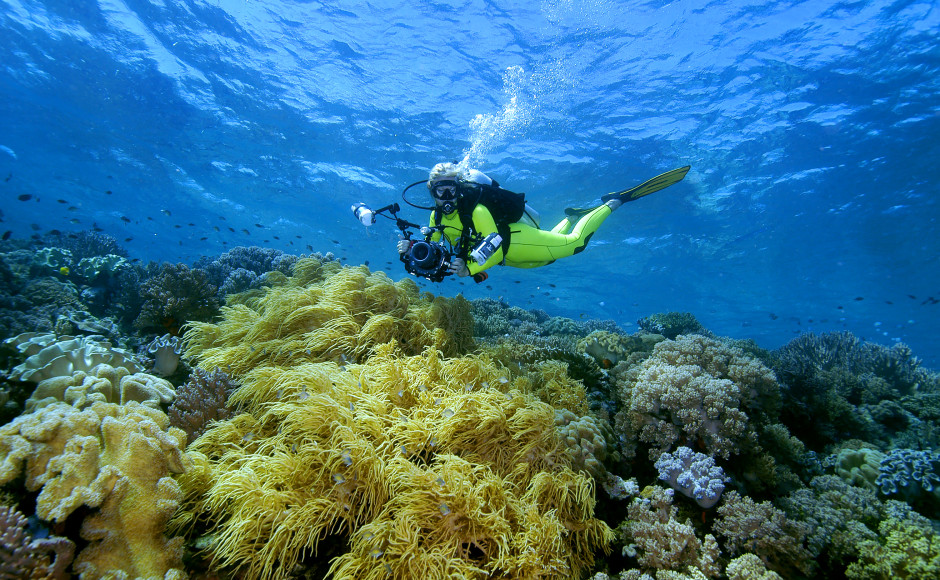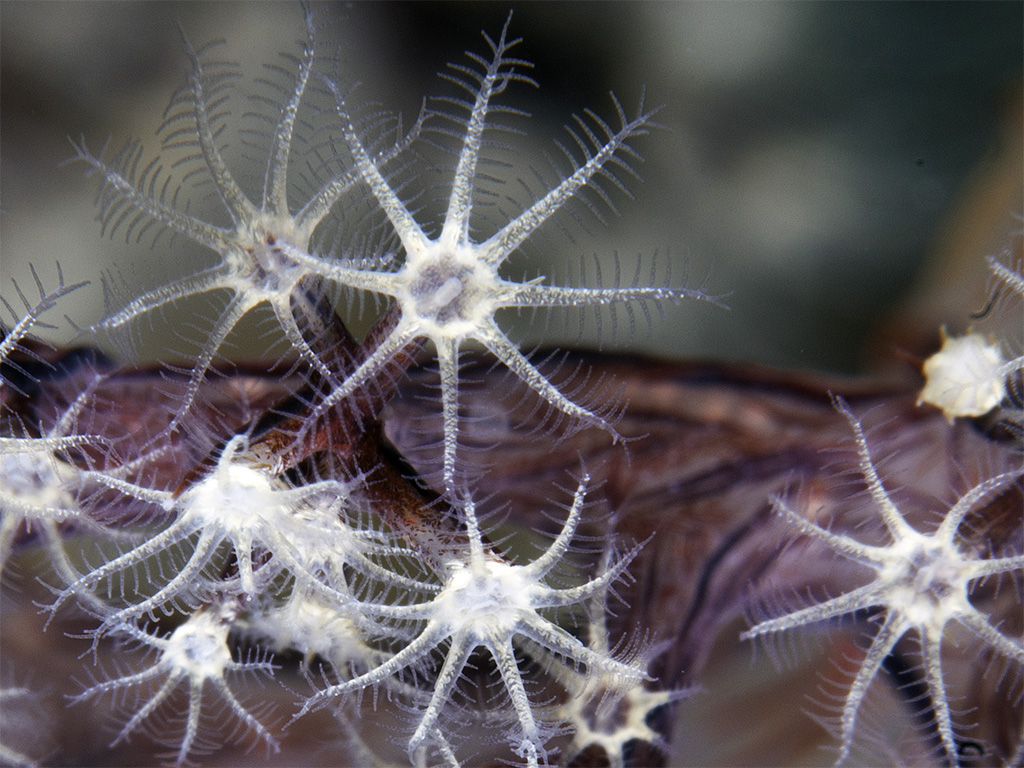Marine Life Sightings
Every single living creature on the reef needs to eat. Predators and prey live alongside each other and marine animals must compete for their food resources. This amazing survival game, ruled by the hierarchy of the food chain fascinates divers when they come to such a biodiverse ecosystem as Wakatobi.
Wakatobi’s reefs are a model of diversity, yet there are no dominant species with obesity problems! The myriad marine creatures have varying and balancing diets, in what is obviously a very equilibrated ecosystem. Let’s take a look at what’s on Wakatobi’s gourmet menu this month.
The feeding grounds offer a wide variety of dishes. It all starts with the autotrophs, such as macro algae and weeds, which are at the base of the food chain and produce their own food via photosynthesis. The Heterotrophes include all the other organisms that cannot make their own food. This group includes virtually all animals living on the reef – they must consume plants, others animals, or the wastes of other organisms.
Herbivores, such as damselfish or parrotfish feed primarily or exclusively on plants. Carnivores feed on other live animals, from coral polyps to moluscs and fish. Good examples of carnivores include a large number of the wrasse family, triggerfishes and lots of stingrays. The Piscivores feed primarily on fish – they are the hunters of the sea, like the barracuda and groupers. Piscivores also include the ‘ambush predators’ like the scorpionfish and the ‘anglers’ like the frogfish. Some, like the angelfish, pufferfish and turtles are Omnivores, which means they can feed on both plants and animals. Turtles enjoy a diet of on sponges, algae and on jellyfish. Pufferfish are also Omnivores, feeding on both invertebrates and algae. Some marine animals like animal and plant waste, or decaying organic matter and they are known as Detritivores, a group which includes sea cucumbers, spaghetti worms and some crustaceans. Tunicates, clams and sponges are amongst the numerous Filter feeders which feed by ‘filtering’ organic particulate matter and food particles from the water column. Some Anthias and corals are what are known as Planktivores – they feed on zooplankton, or small organisms suspended or drifting in the currents.
Corals often extend their tentacles at night, to capture food with the aid of their stinging tentacles or ‘nematocysts’. And finally Parasites are creatures which live off another organism, taking food from the host and not giving anything of benefit in return, like for example the parasitic isopods. In the marine ecosystem, not everybody is eating at the same time. The diurnal species are active during daylight hours, and seek refuge in protected areas of the reef at night, whereas nocturnal species, such as moray eels, squirrelfish, bigeyes, lionfish animate our night dives, mainly feeding under the cover of the darkness. The activity in low-light hours of dawn and dusk make life on the reef an amazing theater at anytime of the day or night.





